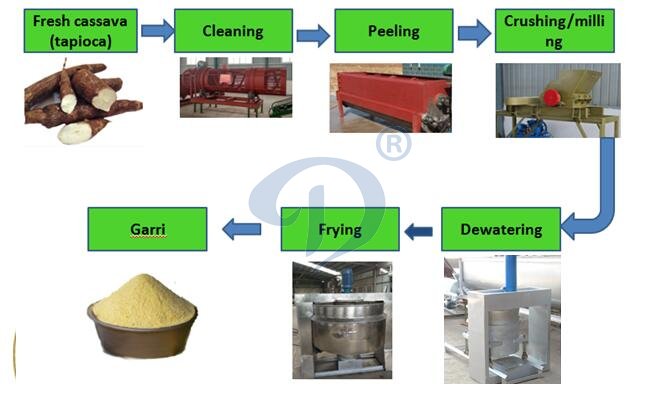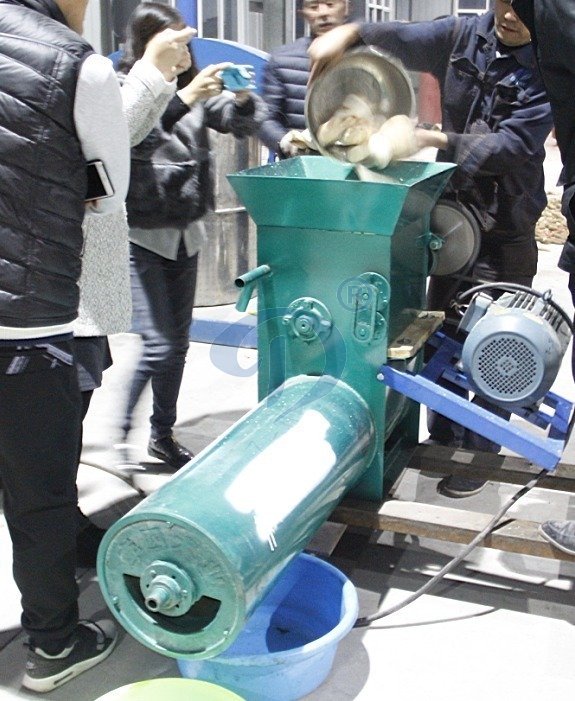
Garri production process in Nigeria
Industry news/ Chat online/ Leave a message/ December 16, 2019

Garri production process
Cassava is a major staple crop in Nigeria, as cassava itself and its product are found in the daily meals of Nigerians.Cassava is a tuberous root that has a shelf life of 2 to 3 days. Once harvested, it has to be either consumed immediately or processed into more stable product forms.
Gari is dry, crispy, creamy-white and granular. It is estimated that 70% of the cassava produced in Nigeria is processed into gari. As a result, gari is the most commonly traded cassava product.
The production process of garri from cassava include cassava sorting , cassava peeling and washing , cassava grating , cassava mash dewatering, garri frying , sieving and packing . The detail garri production process as below :

Leave A Message
- Do you want to buy machine?
- Yes, I want to buy machine
- No, I want to learn more in advance.
- What is your raw material?
- Cassava
- Potato
- Sweet potato
- Others
- 2. What is the final product you want to produce?
- Garri
- Cassava flour
- Cassava starch
- Cassava chips
- Attiekie
- Bammy
- Others
- 3.What is your capacity plan?
- Small scale garri machine
- 1ton per day
- 2tons per day
- 3tons per day
- 10tons per day
- 20tons per day
- Others
- 3.What is your capacity plan?
- Small scale
- 5tons per day
- 10tons per day
- 20tons per day
- 50tons per day
- 100tons per day
- Others
- 3.What is your capacity plan?
- Small scale
- 5tons per day
- 10tons per day
- 20tons per day
- 50tons per day
- 100tons per day
- 200tons per day
- 300tons per day
- Others
- 3.What is your capacity plan?
- Small scale
- Middle type
- Large scale
- What is your capacity plan?
- Small scale
- 5tons per day
- 10tons per day
- 20tons per day
- 50tons per day
- 100tons per day
- 200tons per day
- 300tons per day
- Others





